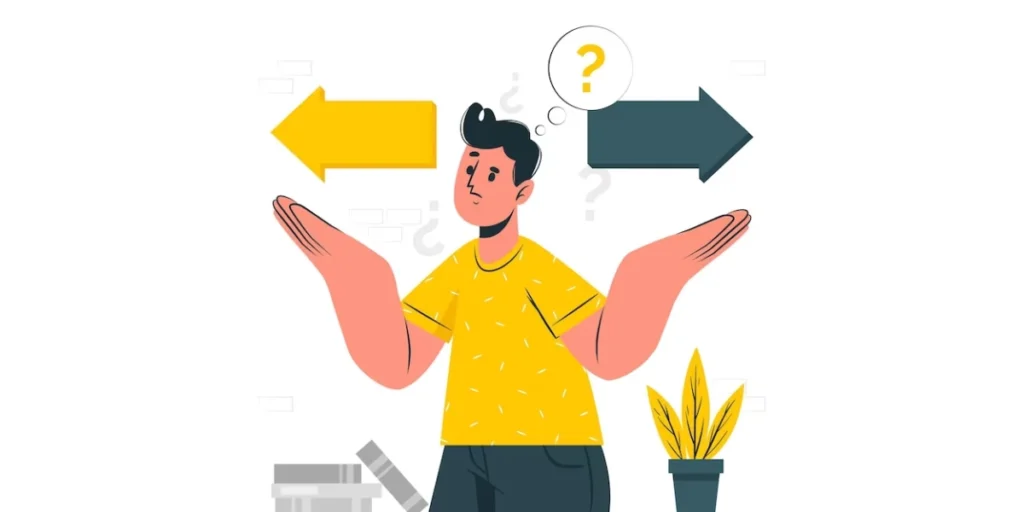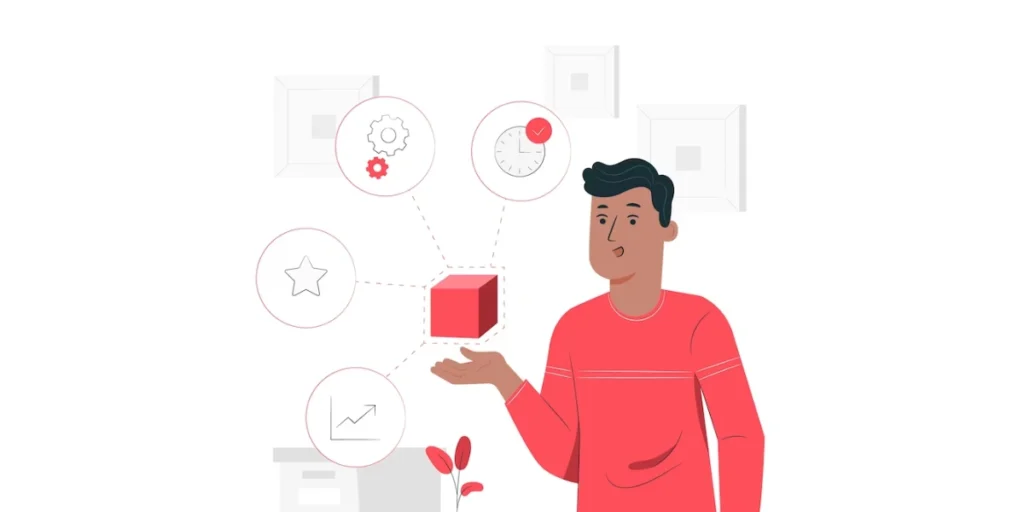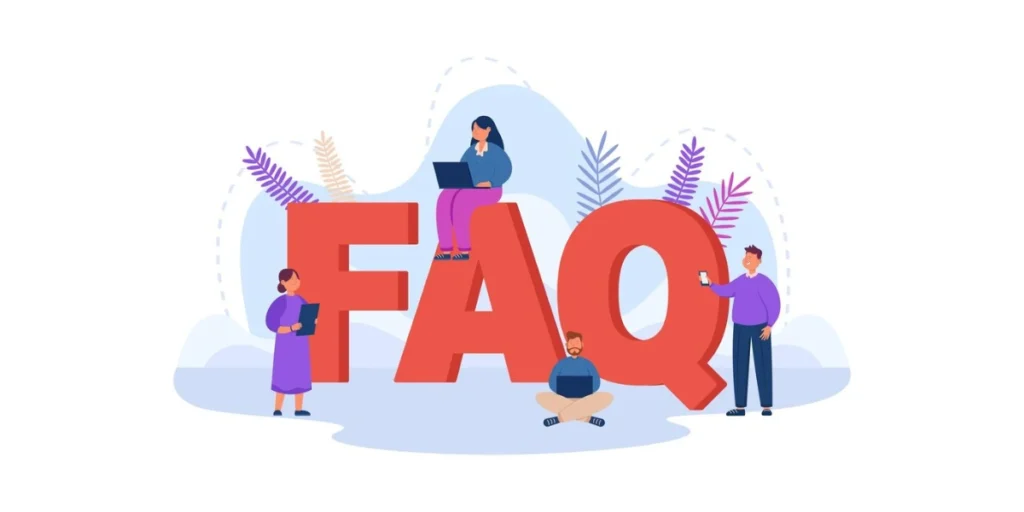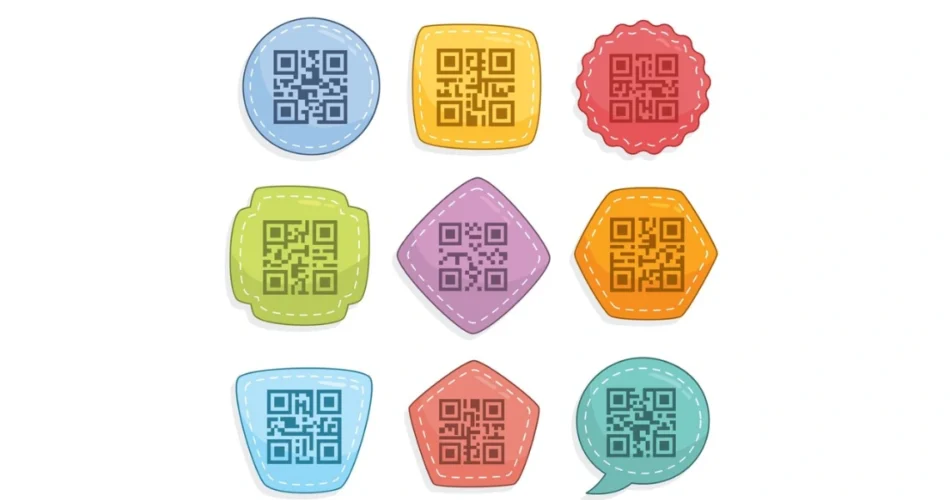In a nutshell: QR Code shapes, like circles, triangles, and custom designs, can enhance your brand’s visual appeal and increase scan engagement. But design flexibility comes with technical limits. To ensure scannability, always maintain the quiet zone, proper contrast, and use a high error correction level. Tools like Scanova let you create and customize shaped QR Codes safely. These are ideal for marketing, packaging, invitations, and social media campaigns. Just be sure to test them across devices before going live.
QR Codes have revolutionized how we access information, bridging the physical and digital realms seamlessly. But have you ever wondered if there’s more to QR Codes than meets the eye?
If you think QR Codes are just square-shaped, think again. There are various QR Code shapes that have come to the forefront recently.
Are custom‑shaped QR Codes, like circles, triangles, or hearts, really worth it?
A recent survey shows that visually branded QR Codes can increase scan rates by 40%.
But there’s a trade‑off: push the shape too far and your code might break. In this guide, we’ll walk through how to make unique QR Code shapes, explain scan‑safe shape design tips that combine creativity and reliability.
We will explore a diverse range of applications for these distinctive QR Code shapes. From heart-shaped QR Codes to circular QR Codes, there are many shapes to be discovered.
So let’s get started with it!
A. What does the QR Code shape mean, and how does it affect marketing?
A shaped QR Code is just like a regular QR Code, but with a twist. It’s designed in a fun or custom shape. Instead of the usual square, it could be a circle, triangle, or even shaped like your logo.
Marketers use shaped QR Codes to grab attention. Think about it: when something looks different, people are more likely to notice and scan it.
It’s great for branding, too. If your brand has a soft, playful vibe, a round QR Code fits better than a sharp-edged square.
Or let’s say you want to promote a Valentine’s Day event. A heart-shaped QR Code adds that perfect touch.
You’ll see brands use these on product packaging, flyers, posters, or even business cards. The shape makes the code blend with the design and feel more inviting.
Just keep one thing in mind: no matter the shape, it must still scan properly. So always test it before printing.
B. How do I create different QR Code shapes without breaking scanability?

Creating a QR Code with different shapes is as easy as it gets. You don’t need to visit various websites or scour the internet to create one. Just follow these steps to create different QR Code shapes.
1. Start by accessing the Scanova QR Code Generator online.
2. Select a relevant content category according to your preference. For example, choose the “Website URL” option from the menu and input your desired URL. This URL serves as the destination when the QR Code gets scanned.
3. Make a choice between a “static” or “dynamic” QR Code. The default selection is the dynamic option.
4. Initiate the QR Code generation process by clicking the “Generate QR Code” button. This action creates a basic black-and-white QR Code linked to your website.
5. Locate the “Edit Design” button beneath the QR Code on the right and click it. You will encounter two design options; opt for the “Custom Logo” option.
6. On the displayed screen, you’ll find various tabs for adding a logo, editing the appearance of the eyes, adjusting data, and modifying the background. Within these choices, you’ll also see the “Frame” option.
7. Choose your preferred shape/frame design from either the “Suggested” or “All” options based on your preference.
8. Once you’ve completed all other design adjustments, proceed to the next step.
9. Verify the functionality of your QR Code. Prior to downloading and using it, test the QR Code with various devices and QR Code scanning applications to ensure its correct operation, accurately directing users to the intended URL.
10. Acquire your QR Code by downloading it. Scanova offers the flexibility to download your QR Code in multiple formats suitable for both print and digital applications.
11. You are now prepared to integrate your QR Code into your marketing materials. Position it prominently where it can be easily noticed and scanned by your target audience.

C. Why are different QR Code shapes important?

While traditional square QR Codes are the most commonly used, the emergence of diverse QR Code shapes has introduced a new dimension to their importance.
Here’s why different QR Code shapes matter:
1. Looks better with your design
Using different QR Code shapes helps your design feel more natural. A plain square might stand out too much or look off on certain packaging or posters.
But a circle, heart, or even a shape that matches your logo? That blends in better and makes everything look more polished.
2. Helps with branding
A custom QR Code shape can match your brand’s style or even mimic your logo. It’s a small touch, but it helps people remember you.
When the shape fits the brand, the QR Code becomes more than just a scannable box; it becomes part of your identity. People will be able to connect with your marketing campaigns.
3. Feels more personal
A QR Code shape can hint at what it’s for. A heart-shaped one on a wedding invite or gift tag? That instantly adds meaning.
It gives people a better experience and makes the interaction feel more thoughtful.
4. Works great for creative projects
Designers and artists love playing with QR Code shapes. You’ll find them in murals, on walls, even in 3D QR Code art.
It turns something techy into something creative, and connects the real world with the digital one in a cool way.
5. Fits where you need it
Sometimes the space you’re working with isn’t square. A round product label? A curved surface?
That’s where a circular QR Code shape just makes sense. It adapts to your layout and still does the job.
6. Scans just fine with modern tech
Worried about whether shaped QR Codes still scan? Don’t be. Most QR scanning apps today are smart enough to handle different QR Code shapes.
As long as the design follows basic rules, people can scan it without a problem.
7. Gets more attention
People notice things that are different. A fun or creative QR Code shape stands out more than a basic square.
That curiosity gets more scans, and more scans mean more people take action.
D. QR Code shapes and their significance

In recent times, diverse QR Code shapes offer exciting possibilities. Let’s explore various QR Code shapes and their significance:
1. Square QR Codes
The classic square shape is highly functional and recognizable. It’s commonly used for a wide range of applications, from product packaging and advertising to event tickets.
Its significance lies in its ubiquity and ease of scanning, making it a reliable choice for everyday use.
2. Circular QR Codes
Circular QR Codes are a popular choice for branding and design-conscious applications. They often appear on round products or marketing materials, seamlessly integrating with the product’s aesthetics.
Their significance lies in their ability to blend into designs while maintaining scanning functionality.
3. Heart-shaped QR Codes
Heart-shaped QR Codes are a delightful way to convey emotions and messages of love. They are frequently used in greeting cards, wedding invitations, and romantic gestures.
Their significance is in adding a touch of sentimentality and personalization to digital interactions.
4. Logo or custom-shaped QR Codes
Custom-shaped QR Codes can take on various forms, such as company logos, product silhouettes, or themed designs.
These shapes are significant for branding and marketing purposes, as they reinforce brand identity and create a unique visual connection between the QR Code and the associated content.
5. Artistic and thematic QR Codes
QR Codes have found their way into the world of art and design. Artists and architects use QR Codes as a canvas to convey messages, tell stories, or provide additional context to their creations.
The significance here is in the fusion of technology and art, creating immersive and interactive experiences.
6. Geometric QR Codes
QR Codes can take on various geometric shapes, such as triangles, hexagons, or pentagons.
These shapes are often chosen for their aesthetic appeal and can be integrated into designs where symmetry and balance are crucial. Their significance lies in design harmony and visual impact.
7. Complex QR Code patterns
Some QR Codes use intricate patterns within their shape. These patterns can serve both aesthetic and functional purposes, as they may contain additional data or security features. Their significance is in data density and enhanced security.
8. Scalable QR Codes
They can be designed to scale up or down without losing scanability.
This scalability is significant for applications where QR Codes need to fit various sizes, from billboards to business cards.
9. Interactive QR Codes
These codes can be combined with augmented reality (AR) to create interactive experiences.
Scanning the QR Code may trigger animations, videos, or 3D models. Their significance is in enhancing user engagement and providing immersive content.
10. Accessibility QR Codes
QR Codes can also be designed with accessibility in mind, incorporating features like larger dots and more prominent patterns to aid individuals with visual impairments.
Their significance lies in promoting inclusivity and equal access to information.
E. Choosing the right QR Code shape

Selecting the right QR Code shape is quite crucial for your business or marketing needs. Here are some factors to consider before you choose the perfect QR Code shape!
1. Consider your brand
If you’re using QR Codes for branding or marketing purposes, opt for shapes that align with your brand identity. Custom-shaped QR Codes, incorporating your logo or brand elements, reinforce brand recognition.
Scanova is a perfect QR Code generator for Dynamic QR Codes. The best part of Scanova is their useful options to generate dynamic QR Codes with brand identity including adding logo, color codes of the brand, etc. Also, they have easy-to-use templates for QR Codes for a quick implementation of any sort of needs.
Muthaian Prakash K, Director, Olam Information Services Pvt. Ltd.
2. Functionality matters
Ensure that the chosen shape doesn’t compromise scanning functionality. While unique shapes are appealing, they must still be easily scannable with standard QR Code readers.
3. Contextual relevance
Think about the context in which the QR Code will be used. For instance, heart-shaped QR Codes are great for romantic messages but may not suit all scenarios.
4. Aesthetics and integration
Choose shapes that integrate seamlessly with your design or product. Circular QR Codes often fit well with round objects, while geometric shapes can add symmetry and balance to designs.
5. User engagement
Consider the level of user engagement you want to achieve. Unique shapes can pique curiosity and encourage scanning, potentially increasing engagement with your content.
6. Artistic or creative endeavors
If you’re using QR Codes in art or design projects, let your creativity shine. Explore shapes that enhance your artistic expression and complement your vision.
7. Accessibility
Ensure that your chosen shape is accessible to all users. If inclusivity is important, consider using shapes that are designed with accessibility features for those with visual impairments.
8. Interactive experiences
If you plan to create interactive experiences with augmented reality (AR) or animations triggered by the QR Code, choose a shape that suits the narrative or theme of your content.
9. Scalability
If your QR Code will be used across various sizes of materials, opt for a shape that maintains scannability when resized. This ensures consistent functionality.
10. Security and data requirements
For applications requiring enhanced security or additional data, select shapes that can accommodate complex patterns or extra information.
11. Testing and feedback
Before finalizing your choice, conduct testing with different QR Code shapes and gather feedback from users. This can help you identify any potential usability issues.
12. Legal considerations
Be aware of any legal or trademark restrictions when using custom shapes, especially if they incorporate copyrighted logos or designs.
F. Best practices for QR Code shapes

Selecting the right QR Code shape is crucial to ensure functionality, aesthetics, and user engagement. Here are some best practices for choosing QR Code shapes:
1. Maintain scannability
The primary function of a QR Code is to be scanned easily. Regardless of the shape you choose, ensure that it doesn’t compromise the code’s scannability. Test it with various QR Code scanning apps and devices to confirm that it works effectively.
2. Consider branding
If you’re using QR Codes for branding or marketing, incorporate your brand elements into the shape. Custom-shaped QR Codes that include logos or relevant design elements reinforce brand identity and recognition.
3. Contextual relevance
Select a shape that is contextually relevant to your content or message. Heart-shaped QR Codes are great for romantic messages, while circular ones might suit round products or logos. Choose shapes that align with the purpose.
4. Aesthetic integration
Ensure the chosen shape integrates seamlessly with your design or product. The QR Code should complement the overall aesthetics and enhance the visual appeal of your materials.
5. Engage users
Unique shapes can pique curiosity and encourage users to scan the QR Code. Consider the level of user engagement you want to achieve and choose a shape that aligns with your goals.
6. Accessibility
If inclusivity is a concern, opt for shapes that are easily distinguishable by individuals with visual impairments or color blindness. Accessibility should be a priority in design.
7. Functional adaptation
Depending on your use case, choose a shape that accommodates your functionality requirements. For instance, complex patterns may be suitable for applications requiring enhanced security or additional data storage.
8. Testing and feedback
Before finalizing your choice, conduct thorough testing with real users and various scanning devices. Gather feedback to identify any usability issues or potential improvements.
9. Scalability
If your QR Code will be used across different sizes of materials, select a shape that maintains scannability when resized. Consistency in functionality is essential.
10. Interactive potential
Explore how the chosen shape can be used for interactive experiences. QR Codes can trigger augmented reality (AR) content or animations, adding an extra layer of engagement.
11. Legal considerations
Be aware of any legal or trademark restrictions, especially when using custom shapes that incorporate copyrighted logos or designs. Ensure that your design complies with copyright and trademark laws.
12. Simplicity and clarity
Keep the design simple and clear. Overly complex shapes may confuse users and hinder scanning. Aim for a balance between creativity and clarity.
13. Eco-friendly options
Consider eco-friendly shapes or patterns that align with sustainability initiatives, especially if your brand or campaign promotes environmental consciousness.
G. What are the technical rules for designing custom QR Code shapes?
Custom QR Code shapes look cool, but they still need to follow a few rules to work well. Here’s what you should keep in mind:
1. Keep the quiet zone
This is the blank space around your QR Code. It helps scanners know where the code starts and ends. Always leave enough space—at least 4 units wide on all sides.
2. Don’t mess with the core structure
Even if you change the outer shape, don’t move or delete the little squares inside. The position markers (those big squares in the corners) and the data pattern should stay untouched.
3. Use a high error correction level
QR Codes have built-in error correction. It lets the code work even if part of it is blocked or changed a bit.
For custom QR shapes, go with a high error correction level: Level Q or H. This way, even if your design overlaps a little, it will still scan.
4. Test for contrast
Your code needs to stand out from the background. Dark QR Code on a light background works best. Avoid using similar colors or busy patterns behind it.
5. Stick to clean file formats
If you’re printing your QR Code, save it in a high-res format like PNG, SVG, or PDF. Blurry codes don’t scan well.
6. Always test it
Before you go live, scan your custom QR Code shape with different phones and apps. If it works everywhere, you’re good to go.
These custom QR Code technical guidelines help make sure your code looks good and works perfectly.
H. FAQs: QR Code shapes

1. What are QR Code shapes?
QR Code shapes refer to the various forms and designs that QR Codes can take beyond the traditional square shape. These shapes can include circles, hearts, logos, and more, adding aesthetic and branding elements to QR Codes.
2. Why would I use a different QR Code shape?
Using different QR Code shapes offers several advantages, including enhanced aesthetics, improved branding, emotional appeal, artistic expression, and the ability to fit into various design contexts.
3. Do different QR Code shapes affect scanning?
Different QR Code shapes should not affect scanning functionality as long as they are designed correctly. However, it’s essential to test the shape to ensure that it can be scanned easily with QR Code readers.
4. How can I create a custom-shaped QR Code?
You can create a custom-shaped QR Code using Scanova’s QR Code Generator.
5. Are there any limitations to QR Code shapes?
While QR Codes can take various shapes, it’s essential to balance aesthetics with functionality. Overly complex shapes or intricate designs may hinder scanning or lead to errors. Additionally, custom shapes should adhere to copyright and trademark laws.
6. What are some popular QR Code shapes and their uses?
– Circular QR Codes: Suitable for round objects or products with a circular logo
– Custom-shaped QR Codes: Incorporate brand logos or unique designs for branding and recognition
– Geometric QR Codes: Add symmetry and balance to designs with various polygonal shapes
7. Can I use different QR Code shapes for my business’s branding?
Yes, custom-shaped QR Codes can be an excellent branding tool. You can incorporate your brand’s logo or design elements into the QR Code, reinforcing brand recognition and making it visually appealing.
8. Are there any accessibility considerations when using different QR Code shapes?
Yes, accessibility is essential. When using different QR Code shapes, ensure that they are easily distinguishable for individuals with visual impairments or color blindness. Consider contrast and clarity in design.
9. Are there QR Code shapes suited for interactive experiences?
Yes, some QR Code shapes, such as those with augmented reality (AR) integration or animations, can create interactive experiences for users. These shapes trigger additional content when scanned, enhancing engagement.
10. What are some emerging trends in QR Code shapes?
Emerging trends include dynamic and interactive shapes, 3D QR Codes, holographic QR Codes, multisensory experiences, and shapes integrated into wearable technology. The future of QR Code shapes is likely to be diverse and innovative.
Summing Up
As we’ve delved into QR Code shapes, it’s evident they go beyond mere functionality. They tell stories, evoke emotions, and elevate user experiences in ways traditional QR Codes can’t.
Whether you’re a business, an artist, or just curious about QR Code shapes, now is an exciting time to explore this evolving field. With technology and design constantly progressing, we can anticipate even more innovative QR Code shapes and experiences in the future.
If you’re still reading, you’ve already learned everything about QR Code shapes. If you have any questions, let us know in the comments.


